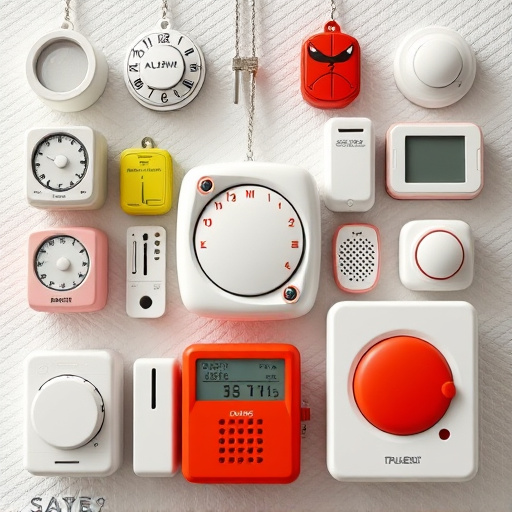Personal safety beacons with powerful panic alarm sounds and advanced GPS location sharing help individuals in emergencies. They transmit coordinates and emit distinctive alarms over impressive distances to alert nearby people or emergency services promptly, especially in remote areas. While privacy concerns exist, encryption, customizable settings for alarm volume and carry distance, and control over location access address these issues, allowing users to prioritize personal safety while respecting their privacy.
Personal safety beacons with location sharing are revolutionizing emergency response. These compact, portable devices emit a unique panic alarm sound, transmitting vital data that pinpoints the user’s exact location. In critical situations, this instant communication enhances response times, saving lives. Understanding how these beacons work and addressing privacy concerns surrounding their use can unlock their full potential as life-saving tools. Key considerations include the range at which the panic alarm sound carries, ensuring maximum visibility during emergencies.
- Understanding Personal Safety Beacons: A Life-Saving Tool
- How Location Sharing Enhances Emergency Response
- Ensuring Privacy: Addressing Concerns About Panic Alarm Features
Understanding Personal Safety Beacons: A Life-Saving Tool
Personal safety beacons, armed with life-saving features like a panic alarm and location sharing capabilities, are revolutionizing individual security. These compact devices carry an incredible distance, often equipped with GPS technology to pinpoint users’ exact locations in case of emergencies. The powerful panic alarm sound serves as a distress signal, alerting nearby individuals or emergency services promptly.
Whether hiking, traveling solo, or navigating unfamiliar urban landscapes, these beacons offer peace of mind by providing a means of communication during dire situations. Their portability allows users to carry them effortlessly, ensuring that help can be summoned quickly and efficiently if needed.
How Location Sharing Enhances Emergency Response
When it comes to personal safety, especially in emergency situations, location sharing plays a pivotal role. Modern personal safety beacons utilize advanced technology to transmit an individual’s exact GPS coordinates to emergency services and loved ones with just a simple press of a button. This immediate sharing of location data is a game-changer when seconds count.
For instance, if someone finds themselves in a panic situation, like getting lost or being in danger, they can quickly activate their safety beacon. The beacon emits a unique Panic Alarm sound that alerts nearby people and emergency responders to the user’s precise location. This feature ensures help arrives faster, even in remote areas where traditional communication methods may be challenging due to terrain or signal barriers.
Ensuring Privacy: Addressing Concerns About Panic Alarm Features
When integrating personal safety beacons with location sharing, privacy becomes a paramount concern, especially when considering panic alarm features. Many users have valid concerns about the potential misuse of their location data and the distinct sound of a panic alarm, which could attract unwanted attention or even put them at greater risk in certain situations. However, developers are actively addressing these issues through robust encryption methods for data transmission and innovative design choices that allow users to customize the alarm’s volume and carry distance.
For instance, advanced privacy settings enable individuals to control who can access their location information, ensuring that personal safety remains a personal choice. Additionally, some beacons offer adjustable sound profiles, allowing users to select a less conspicuous alarm sound while still maintaining its effectiveness in emergencies. By empowering users with these controls, personal safety beacons evolve from invasive tools into valuable assets that enhance security without compromising privacy.
Personal safety beacons with location sharing are powerful tools that can significantly enhance individual safety, especially in emergency situations. By integrating these devices with panic alarm features and location tracking, users can ensure swift response times for help. While concerns about privacy exist, particularly regarding the carrying distance of the panic alarm sound, responsible use and clear communication channels can address these issues. Ultimately, embracing these technologies can foster a safer environment, giving individuals peace of mind knowing assistance is accessible when needed most.
